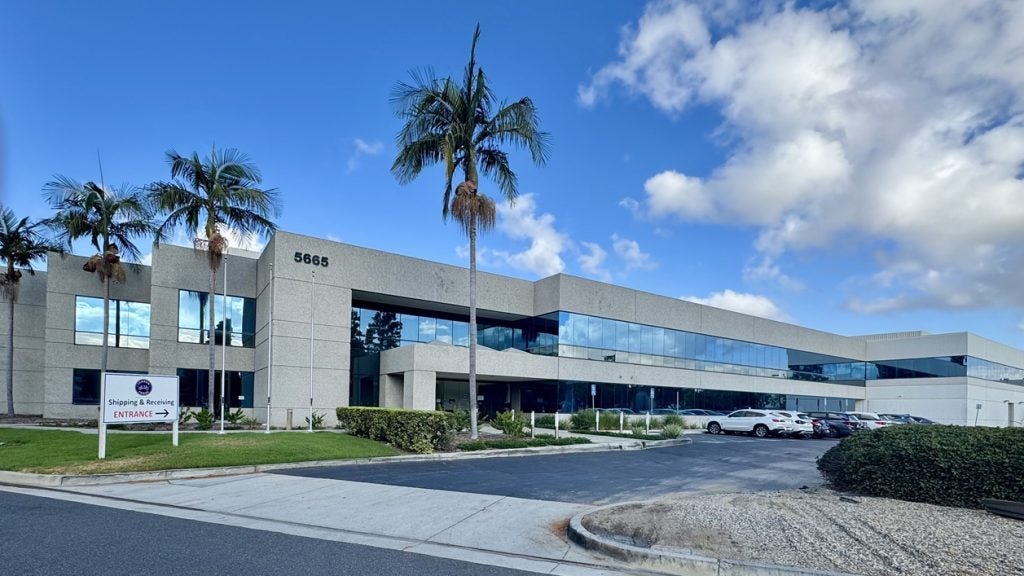
US contract manufacturer Tandem Foods has enjoyed double-digit growth in recent years and is “accelerating rapidly” on the heels of the acquisition and merger with local business Bar Bakers.
The Pennsylvania-based better-for-you snack bars maker counts some of the largest branded CPG companies in the US as its customers. It rebranded this year from TruFood Manufacturing and is backed by Mubadala Investment Co. in Abu Dhabi and Manna Tree Partners in Colorado.

Discover B2B Marketing That Performs
Combine business intelligence and editorial excellence to reach engaged professionals across 36 leading media platforms.
Michael Buick, who took on the CEO role in 2023 and is a former executive of SunOpta, TreeHouse Foods and the once ConAgra Foods, talks about the business landscape and strategy with Just Food’s Simon Harvey.
Simon Harvey (SH): Is Tandem Foods involved in other better-for-you categories beyond bars?
Michael Buick (MB): I would say 80-plus per cent of our business is bars. We also do some chocolate moulding – chocolate squares, peanut butter cups, things like that. As we continue to move forward there’s quite a bit of innovation and we’re certainly on the leading edge of a lot of that.
SH: I was under the impression that Tandem Foods was also a private-label manufacturer.
MB: Some of our products may end up as private label in retailers but we’re working exclusively with brand owners.
Speaking of private label, in the health and nutrition segment of bars, private label hasn’t really taken much of a hold. Costco has a decent-sized business under their Kirkland Signature brand but if you were to shop in traditional grocery banners there’s not a lot of private label.

US Tariffs are shifting - will you react or anticipate?
Don’t let policy changes catch you off guard. Stay proactive with real-time data and expert analysis.
By GlobalDataAfter the two largest brands, there’s a lot of fragmentation and so, for a variety of reasons, private label hasn’t taken hold. With my background and our capabilities, private label is something we continue to explore but we’ve got our hands full with brands at the moment.
SH: Tandem Foods has eight factories. That suggests demand for co-manufacturing in snack bars is huge?
MB: We just opened up our eighth factory. Three things are driving that for us. One is we’re definitely seeing category growth. Then, within the category, there are some brands that are driving really strong growth and they need capacity to grow.
The second thing is innovation. We have a very talented and deep R&D team. A lot of these larger companies have their own R&D but may be not as focused on bars as we are. Collaboratively, we can work together.
What I’m seeing across the store is a renaissance of innovation. We have a lot of projects in various stages – some of them are just hitting the market, some of them are further along, or not as far along.
Number three, there’s a bit of capital allocation that larger companies are going through. Do they want to put money into their own plants for capacity, for quality upgrades, or would they rather move some of that volume to a contract manufacturer?
The combination of those three things are what has driven a lot of our growth and what gives us a lot of confidence in our growth over the next five-plus years.
SH: Tandem Foods acts in an advisory capacity when it comes to innovation then?
MB: There are companies that come to us and say ‘we’d really like a bar that targets this demographic, this market, what can you come up with?’
All the way to the other end of the spectrum, which is they have a fully developed formula, they know what they want but they don’t have a place to make it. They’ll come to us and say ‘will you put in a line that does this specific thing and partner with us on the development of this innovation project?’
Those are the two far extremes and there’s everything in the middle. I bet we’re working on 50-plus innovation projects at the moment with companies across the health and nutrition-bar segment.
SH: Do you cater to start-ups as well as the big guys?
MB: With eight plants and the size of our plants, we’re a national scale manufacturer. Most of our customers are larger national scale brands that really require the scale that we can provide. That’s capacity, capability, quality, service, etc.
In this category, where there’s a number of very exciting start-up companies and brands, we selectively work with brands that we think have a lot of legs, have a really strong consumer proposition.
They may struggle to meet our minimum order requirement but let’s get in early, let’s partner, let’s help them grow and maybe over the next two or three years, they’re going to grow into needing the scale we provide.
But, to be clear, I would say most of our customers and most of our volume are for larger-scale brands.
SH: In the current macro uncertainty, I imagine you’re seeing an increase in business or interest from manufacturers that are perhaps reluctant to invest in new factories or production lines.
MB: You’re spot on, we’re definitely seeing that. It all comes down to partnerships. We’re seeing the same risks in terms of tariffs and inflation. But in building partnerships in contract manufacturing, we continue to make smart investments on behalf of our customers.
Protein is top of mind for many consumers
We’re seeing lots of opportunity. Whether it’s for us to take a greater share of the category or just to support the growth of, for example, what we’re seeing in protein bars, GLP-1 drugs, which are certainly at the forefront of that.
I would say protein is top of mind for many consumers and bars continues to be a very portable and convenient method to deliver healthy amounts of protein.
The macro-economic environment for us today is a tailwind but we’ve got to be very smart on how we’re structuring our partnerships.

SH: Is it all about protein in light of MAHA and the pressures on manufacturers to reformulate?
MB: I think protein is a significant lever but it’s not the only one. We’re seeing more and more requests to add protein to existing bars or to launch new bars with protein and continue to move up from eight grams of protein to how do we get to 12? How do we get to 16?
There are other brands not playing in protein but are playing in clean label, simple ingredients. There’s many of them that are winning.
Then there’s a third group looking for indulgence. Bars that are like candy bars still have runway and are seeing some growth.
SH: What about functional bars with added ingredients, is that a trend you’re seeing an increase in?
MB: For vitamins and minerals, I think there’s always a spot in the bar category for that. I would say I’m not seeing, at least with our customers, a tremendous amount of growth in that. What I am seeing more of is allergen management. Nut free, those types of things. Having scale manufacturing gives us a little bit more flexibility, and our growth profile and the capital that we can allocate gives us a position where we can partner with some of these brands and build a dedicated line.
SH: Do you see allergens as a growing part of your business going forward, a trend that’s going to have legs?
MB: I do. Consumers continue to become more educated and maybe there’s a greater prevalence of allergies, people are getting smarter about that. I wouldn’t put it at the same par with protein but definitely a lot of our customers are asking us for that.
SH: How do you accommodate these different customers? Does that mean you’ve got one factory, say, with multitudes of production lines?
MB: There are some production lines that are able to make different formats that can make different products for different companies.
Then we do have some dedicated lines for larger companies. For us to drive the greatest efficiency and ultimately deliver the best cost, it makes sense for us to build a dedicated line that does this one thing. Most of our plants have anywhere from two to four production lines.
As we continue to invest in both capacity and capabilities, that’s where we’re generally working hand in hand with our customers. ‘What are you seeing in your business over the next three to five years? How can we make sure we’re in a position to support you’?
SH: Does efficiency mean you’re investing in AI?
MB: We’re definitely just getting in on AI and exploring it and trying to understand how it can help us and ultimately for our customers to be more competitive in the market. Like a lot of my peers and a lot of companies, there’s a lot of learning going on. There’s a lot of experimentation. We’re trying to understand very quickly how it can become an enabler for us going forward.
Our growth is only limited by the time required to invest in more capacity
SH: How did the Bar Bakers transaction expand your capabilities?
MB: It gave us more breadth within the bar category. TruFood Manufacturing didn’t have any baked bar capability. It’s a very large part of the bar business and continuing to grow.
SH: Are you looking at further M&A?
MB: We’re always looking at the landscape and if we find an opportunity that makes sense for us and for our customers, we never say never. At the moment, our focus is more internal.
SH: How has growth been?
MB: We’ve been growing double digits for the last couple of years and I would say that’s accelerating rapidly. We went from 24/5 operations to 24/7 and we continue to invest in labour, capacity, capabilities to support this growth. Our growth at the moment is only limited by the time required to invest in more capacity.
SH: Are you turning any business away?
MB: We are, unfortunately, new opportunities. We have to be selective. We want to make sure that it’s the right customer for us. We’ve got to play some bets with customers and who we want to partner with over the next five to ten years. In contract manufacturing, these are very sticky relationships: five, ten, 15, 20-year relationships.
An area where we shine at Tandem Foods is that we are in a position where we are working with the very largest CPG manufacturers and we are able to meet or exceed any of their quality requirements.





